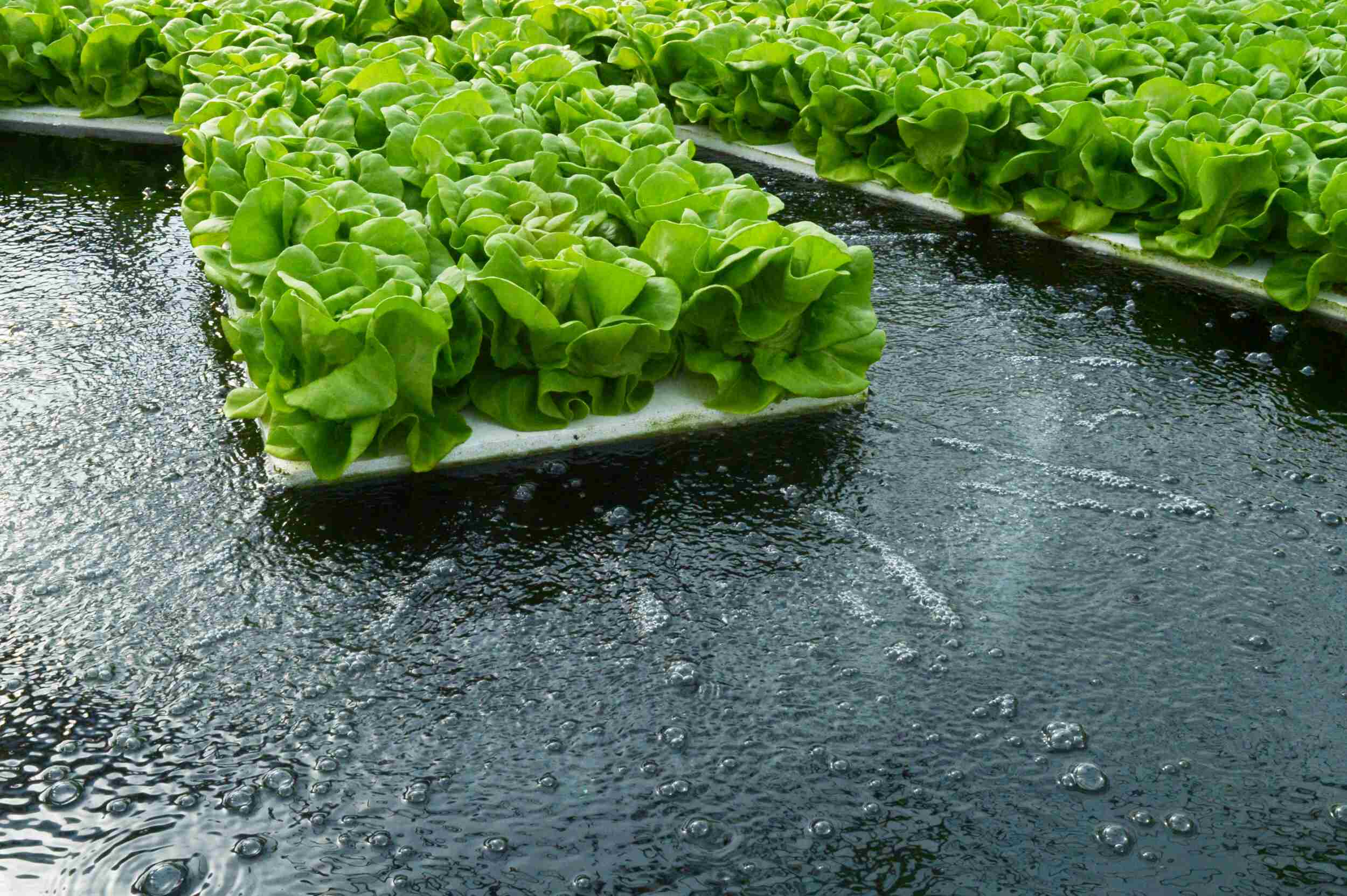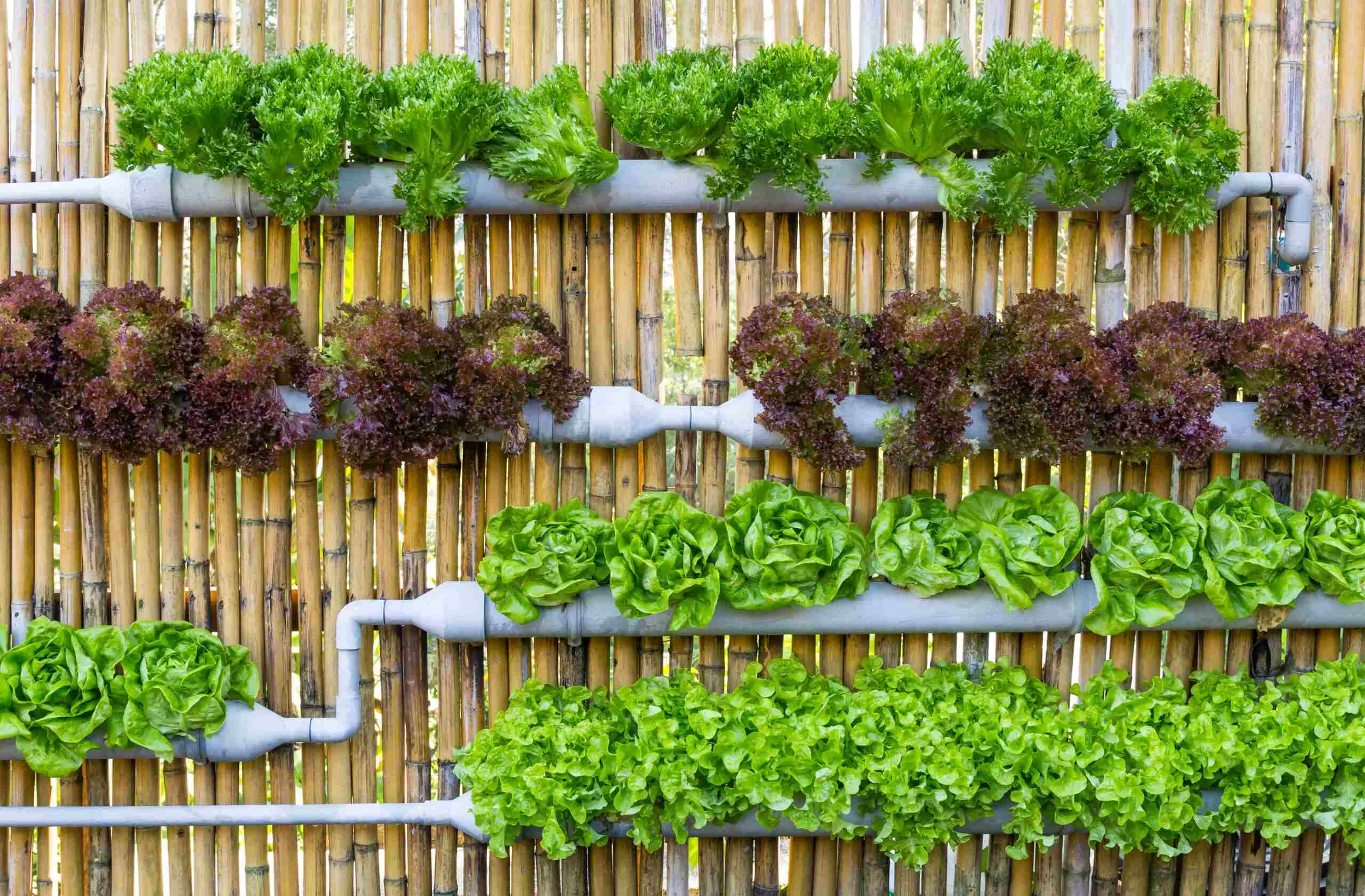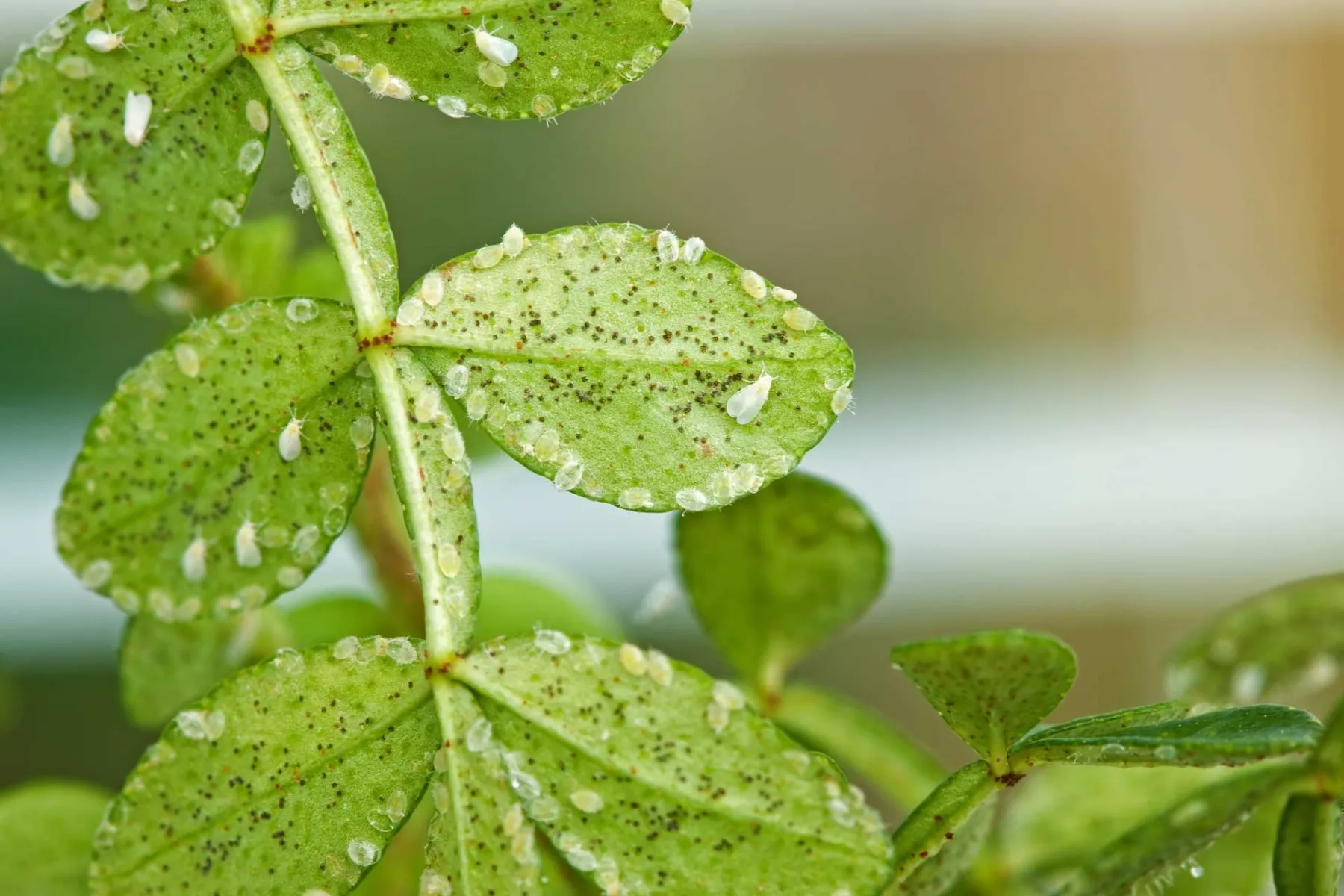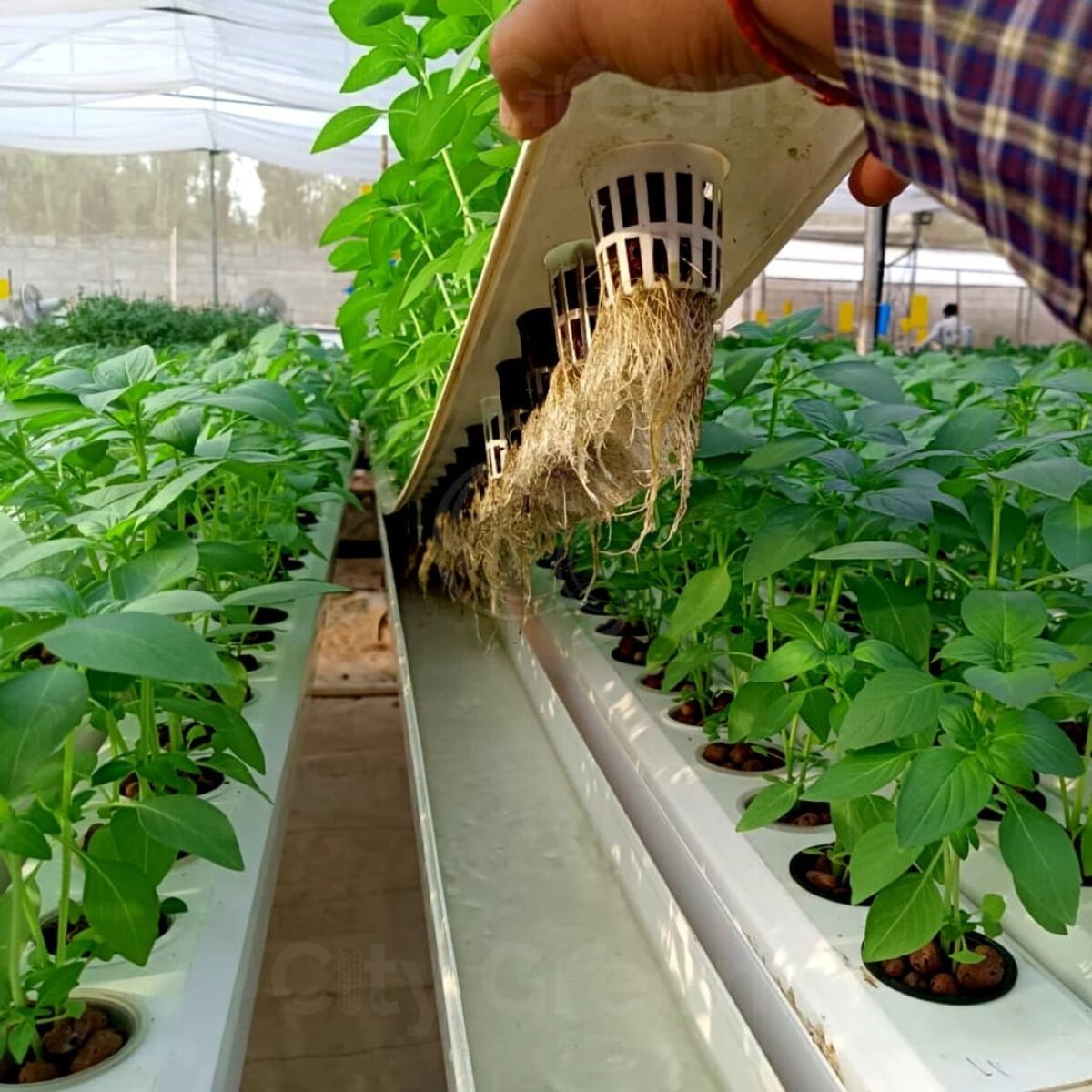Home>Gardening News and Trends>Latest News>What Are Some Advantages Of Hydroponics


Latest News
What Are Some Advantages Of Hydroponics
Modified: February 10, 2024
Discover the latest news and advantages of hydroponics, including increased crop yield, water efficiency, and year-round cultivation. Stay informed and grow your knowledge with our comprehensive guide.
(Many of the links in this article redirect to a specific reviewed product. Your purchase of these products through affiliate links helps to generate commission for Chicagolandgardening.com, at no extra cost. Learn more)
Table of Contents
Introduction
Welcome to the world of hydroponics, a revolutionary method of growing plants without the need for soil. This innovative approach to agriculture has gained tremendous popularity in recent years, offering numerous advantages over traditional soil-based cultivation. By harnessing the power of water and carefully balanced nutrient solutions, hydroponics provides an efficient and sustainable way to grow crops.
Hydroponics, derived from the Greek words “hydro” meaning water and “ponos” meaning labor, is a soilless cultivation technique that dates back to ancient civilizations such as the Hanging Gardens of Babylon. Today, it has evolved into a sophisticated system that is widely used by commercial growers, urban farmers, and even hobbyists.
The primary principle behind hydroponics is to provide plants with the necessary nutrients, water, and oxygen directly to their roots, eliminating the need for soil. Instead, plants are grown in a controlled environment using various growing mediums, such as coconut coir, perlite, or even just water. This enables growers to have complete control over the plant’s growing conditions, optimizing factors such as temperature, pH levels, and nutrient levels.
So, why choose hydroponics over traditional soil-based cultivation? The following sections will highlight some of the key advantages that make hydroponics a preferred method of farming for many:
Definition of Hydroponics
Hydroponics is a soilless cultivation technique that involves growing plants in nutrient-rich water, without the use of traditional soil. Instead of soil, plants are supported by a growing medium, such as perlite, coconut coir, or rockwool, which helps to anchor the roots and provide stability.
This method utilizes a carefully balanced nutrient solution that is delivered directly to the plant’s roots through a hydroponic system. The roots are constantly bathed in a nutrient-rich solution, ensuring that the plants receive all the essential minerals and elements they need for optimal growth and development.
Hydroponics offers several advantages over traditional soil-based farming. One of the main benefits is water efficiency. Because the plants are grown in a closed system, water is recycled and reused, resulting in significantly reduced water usage compared to conventional agriculture methods.
In addition to water savings, hydroponics also provides increased crop yield. By providing plants with precisely tailored nutrient solutions, growers can optimize plant growth and maximize productivity. Plants grown hydroponically often experience faster growth rates and produce larger, healthier crops.
Another advantage of hydroponics is its ability to thrive in limited space. Traditional farming methods require large plots of land, making it difficult for urban areas or regions with limited arable land to engage in agriculture. With hydroponics, plants can be grown vertically or in compact systems, allowing for efficient use of space and the potential for urban farming.
Furthermore, hydroponics offers enhanced control over nutrient levels. Unlike in soil-based cultivation, where the nutrient content can vary and is often difficult to measure accurately, hydroponics allows growers to precisely monitor and adjust the nutrient levels in the system. This ensures that plants receive the ideal balance of nutrients, promoting healthier and more robust growth.
Overall, hydroponics is a sustainable and efficient method of farming that offers numerous advantages over traditional soil-based cultivation. From water savings and increased crop yield to faster growth rates and the ability to grow in limited space, hydroponics has proven to be a game-changer in the field of agriculture.
Reduced Water Usage
One of the significant advantages of hydroponics is its remarkably reduced water usage compared to traditional soil-based farming methods. In traditional agriculture, a significant amount of water is lost to evaporation and inefficient absorption by the soil. However, in hydroponics, water is conserved and recycled within the closed system.
Hydroponic systems use a fraction of the water required by conventional farming practices. Instead of plants having to search for water in the soil, water is directly delivered to the plant’s roots through a nutrient-rich solution. This targeted approach ensures that the plants receive the necessary hydration without wastage.
Water-recirculating systems, such as nutrient film technique (NFT) and deep water culture (DWC), are commonly used in hydroponics. These systems collect excess water and recirculate it back to the plants, reducing the overall water consumption. Additionally, advanced hydroponic systems incorporate technologies like drip irrigation and misting, which further optimize water usage.
Moreover, hydroponics allows growers to capture and reuse water that would otherwise be lost in traditional farming practices. This water recirculation not only reduces water usage but also minimizes the impact on local water sources.
Reduced water usage in hydroponics offers several benefits. First, it helps conserve water resources, particularly in regions experiencing water scarcity or drought conditions. By using water more efficiently, hydroponics enables sustainable agriculture without compromising the availability of water for other essential purposes.
Second, the reduced water usage in hydroponics goes hand in hand with environmental sustainability. Traditional farming methods often involve excessive irrigation, leading to soil erosion and nutrient leaching. In contrast, hydroponics eliminates these issues as plants grow in controlled systems, which recirculate water and nutrients, greatly minimizing soil erosion and contamination.
Third, the reduced water usage makes hydroponics an attractive option for urban farming. With limited access to land and water resources in urban areas, hydroponics offers a viable solution for cultivating fresh produce in vertical farms and indoor settings.
In summary, hydroponics’ ability to significantly reduce water usage sets it apart from traditional soil-based agriculture. By optimizing water delivery directly to the plant’s roots and implementing water-recycling systems, hydroponics offers a sustainable and efficient approach to farming that alleviates water scarcity concerns and supports environmental conservation efforts.
Increased Crop Yield
One of the most significant advantages of hydroponics is its ability to boost crop yields compared to traditional soil-based farming methods. Through precise control over plant nutrition and growing conditions, hydroponics provides an environment that maximizes the growth potential of plants.
In a hydroponic system, plants receive a carefully formulated nutrient solution directly to their roots. Unlike in traditional farming, where nutrients in the soil may be unevenly distributed or depleted over time, hydroponics ensures that plants have access to all the essential nutrients they need for optimal growth.
This targeted delivery of nutrients eliminates the need for plants to allocate energy towards extensive root systems to search for nutrients. Instead, they can focus their energy on above-ground growth, resulting in bigger, healthier plants and increased crop yields.
Furthermore, hydroponics allows growers to maintain precise control over the environmental factors that affect plant growth, such as temperature, humidity, and light. By optimizing these conditions, hydroponic systems create an ideal environment for plants to thrive.
Moreover, hydroponics enables year-round crop production, regardless of seasonal variations or geographical limitations. By providing a controlled environment, hydroponic systems can mimic specific growing conditions, such as temperature and light, enabling plants to grow continuously without being subject to natural climate restrictions.
Hydroponic systems also facilitate better resource allocation, as they allow for optimal space utilization. By having plants grown vertically or in compact systems, growers can cultivate more plants in a given area, effectively increasing the overall crop yield per square meter or acre.
Furthermore, hydroponics reduces the risk of plant diseases and pests. With a soilless system, the likelihood of soil-borne diseases and pests is significantly minimized. This reduces the need for pesticides and creates a healthier growing environment, leading to higher crop yields.
In summary, hydroponics’ ability to enhance crop yield is a game-changer in agriculture. Through precise control over plant nutrition, optimized growing conditions, and efficient space utilization, hydroponics offers a solution to achieve higher productivity and meet the increasing demand for food sustainably.
Faster Growth Rates
One of the remarkable advantages of hydroponics is its ability to promote faster growth rates in plants compared to traditional soil-based cultivation. By providing plants with essential nutrients in a readily available form and eliminating the need for them to search for nutrients in the soil, hydroponics creates an optimal environment for accelerated growth.
In a hydroponic system, plants have direct access to the necessary nutrients through a well-balanced nutrient solution. The roots of plants in hydroponics can uptake nutrients more efficiently compared to soil-based plants, resulting in faster and healthier growth.
Additionally, the controlled environment of hydroponic systems allows for the optimization of other growth factors such as temperature, humidity, and lighting. By tailoring these conditions to the specific requirements of the plants, growers can create an ideal environment that promotes rapid growth.
Furthermore, the absence of soil in hydroponics eliminates the competition for nutrients from weeds and other surrounding plants. As a result, plants can allocate more energy and resources towards growth rather than competing for limited soil nutrients.
Moreover, the precise control over nutrient levels in a hydroponic system ensures that plants receive all the essential elements in the proper balance. This balanced nutrition nourishes the plants and helps them achieve their maximum growth potential in a shorter time frame.
The optimized growth conditions and efficient nutrient uptake in hydroponics not only lead to faster growth rates but also contribute to higher crop yields. When plants are able to grow more quickly, they reach maturity sooner, allowing for more frequent harvests and increased productivity.
Additionally, the faster growth rates achieved in hydroponics enable growers to shorten the overall crop cycle. This allows for more crop rotations or the cultivation of multiple plant varieties in a given year, further increasing the overall productivity of the system.
Sustainable agriculture requires efficient use of resources, and hydroponics offers a solution by providing faster growth rates. By effectively utilizing nutrients, optimizing environmental conditions, and eliminating competition for resources, hydroponics ensures that plants can grow at an accelerated pace, providing a more efficient and productive farming method.
Ability to Grow in Limited Space
Hydroponics offers a remarkable advantage in its ability to grow plants in limited space, making it an ideal solution for urban settings or areas with limited arable land. Unlike traditional soil-based agriculture, which requires vast expanses of land, hydroponics allows for efficient use of space by cultivating plants vertically or in compact systems.
Vertical farming is a popular method used in hydroponics, where plants are grown in stacked layers or vertical columns. This vertical arrangement maximizes space utilization, allowing for more plants to be grown in a smaller footprint. Vertical farming is particularly beneficial in urban areas, where land is scarce and expensive.
Hydroponic systems also enable the use of controlled environments, such as greenhouses or indoor farms. These enclosed spaces provide growers with complete control over the growing conditions, allowing them to cultivate plants in any location, regardless of climate or geographical restrictions.
The compact nature of hydroponic systems also allows for greater flexibility in choosing the growing location. Systems can be set up on rooftops, balconies, or even indoors, making it possible to grow fresh produce in urban areas where traditional agriculture would be impractical or impossible.
Additionally, hydroponics eliminates the need for soil, which further reduces the space requirements. Without the need for vast expanses of land, growers can focus on vertical or compact systems, utilizing the available space more efficiently.
Furthermore, the ability to grow in limited space extends beyond land constraints. Hydroponics also enables growers to cultivate plants in unconventional locations such as deserts or barren landscapes. Through hydroponic systems, water and nutrients can be delivered directly to the plants, creating a self-sustained growing environment despite the challenging conditions.
Overall, the ability to grow in limited space sets hydroponics apart from traditional agriculture methods. Whether it’s utilizing vertical farming, greenhouse structures, or indoor systems, hydroponics provides a scalable and efficient solution that enables cultivation in urban environments, areas with limited arable land, and even in unconventional locations.
Enhanced Control Over Nutrient Levels
One of the significant advantages of hydroponics is the enhanced control it provides over nutrient levels, ensuring optimal plant growth and health. Unlike traditional soil-based farming, where nutrient availability can vary and is often difficult to measure accurately, hydroponics allows growers to have precise control over the nutrient content of the growing medium.
In a hydroponic system, plants receive nutrients through a carefully balanced nutrient solution. This solution contains all the essential minerals and elements necessary for plant growth, and it can be adjusted and customized to meet the specific needs of different plant varieties at various stages of growth.
With this level of control, growers can ensure that plants receive the ideal balance of nutrients they require for healthy growth. This is particularly advantageous in environments where soil nutrient content may be inadequate or imbalanced. By delivering nutrients directly to the plant’s roots, hydroponics eliminates the risk of nutrient deficiency or excess, resulting in stronger and more productive plants.
Furthermore, hydroponics allows growers to easily monitor and adjust nutrient levels in real-time. Measurements can be taken to assess the nutrient content of the solution, and modifications can be made to ensure that plants receive the optimal balance of nutrients for their growth stage.
This level of control over nutrient levels also extends to the pH of the nutrient solution. Plants have specific pH preferences for optimal nutrient uptake, and maintaining the correct pH range in hydroponics is crucial. With the ability to monitor and adjust the pH, growers can create an environment that maximizes nutrient absorption and minimizes nutrient deficiencies or imbalances.
Another advantage of enhanced nutrient control in hydroponics is the ability to adjust nutrient levels to address specific plant requirements and growth challenges. For example, during the flowering or fruiting stage, plants may require higher levels of certain nutrients. Hydroponic systems allow growers to tailor the nutrient solution accordingly, fine-tuning the growing conditions to optimize plant performance.
The precise control over nutrient levels in hydroponics also minimizes the dependence on synthetic fertilizers. Since the nutrient solution is carefully balanced and continuously monitored, growers can reduce or eliminate the need for chemical fertilizers, making hydroponics a more sustainable and eco-friendly farming practice.
In summary, the enhanced control over nutrient levels in hydroponics is a significant advantage. By delivering a carefully balanced nutrient solution and allowing real-time monitoring and adjustment, hydroponic systems promote healthier, more productive plants. This level of control ensures optimal nutrient uptake, minimizes nutrient deficiencies or imbalances, and contributes to more sustainable farming practices.
Reduced Dependency on Pesticides
One of the notable advantages of hydroponics is the reduced dependency on pesticides compared to traditional soil-based farming methods. Hydroponic systems create a controlled environment that minimizes the risk of pests and diseases, reducing the need for chemical interventions.
In traditional agriculture, pests and diseases can easily spread through the soil. The use of chemical pesticides becomes necessary to combat these issues and protect the crops. However, in hydroponics, plants are grown in a soilless medium, eliminating the habitat and breeding ground for many pests and diseases.
The absence of soil in hydroponics greatly reduces the risk of soil-borne pests and diseases, such as root-knot nematodes or fungi. As a result, hydroponic crops are less susceptible to these common soil-related issues, leading to a reduced requirement for chemical pesticides.
Additionally, the controlled environment of hydroponic systems allows for better pest management practices. Growers can implement preventive measures, such as physical barriers, beneficial insects, or biological controls, to keep pest populations at bay without relying on chemical pesticides.
The ability to closely monitor plants in a hydroponic system also enables early detection of pest or disease outbreaks. Growers can quickly identify any signs of infestation and take immediate action, such as pruning affected plants, introducing biological controls, or implementing targeted treatments.
Furthermore, the use of hydroponics enhances plant vigor and overall health, making them more resistant to pests and diseases. The optimized growing conditions, precise nutrient delivery, and controlled environmental factors promote strong and resilient plants that can withstand pest pressures.
Reduced pesticide usage in hydroponics offers several benefits. First, it reduces potential harm to human health and the environment. Chemical pesticides can have negative impacts on human health and contribute to environmental pollution. By minimizing pesticide use, hydroponics offers a more sustainable and eco-friendly approach to agriculture.
Second, reduced dependence on pesticides in hydroponics eliminates the risk of pesticide residues on crops. This is particularly important for growers catering to niche markets or those practicing organic farming. Hydroponically grown produce can be marketed as pesticide-free or organic, providing consumers with a healthier and safer choice.
Overall, the reduced dependency on pesticides in hydroponics reduces the environmental impact, supports sustainable farming practices, and provides consumers with healthier and safer food options. By creating a controlled environment that minimizes pest risks, hydroponics offers a more sustainable and ecologically friendly solution for crop production.
Minimized Soil Erosion and Contamination
Another significant advantage of hydroponics is the minimized soil erosion and contamination compared to traditional soil-based farming methods. With hydroponics, plants are grown in a soilless medium, eliminating the risk of erosion and the contamination of soil resources.
Soil erosion is a serious issue in traditional agriculture, especially in areas with sloping terrain or intense rainfall. When heavy rains occur, topsoil can be washed away, leading to the loss of valuable nutrients and making the land less fertile over time. This erosion can also contribute to sedimentation in water bodies, leading to water pollution and ecological damage.
In hydroponics, plants are grown using inert growing mediums like coco coir, perlite, or rockwool, which do not degrade or erode. There is no risk of soil being washed away by water or wind, preserving the valuable nutrients and preventing soil degradation.
By eliminating soil erosion, hydroponics helps maintain the integrity of the land, preserving its fertility and reducing the need for soil restoration practices commonly required in traditional agriculture.
Furthermore, hydroponic systems can greatly reduce the risk of soil contamination. In traditional farming, chemicals used in fertilizers, pesticides, and herbicides can leach into the soil, potentially contaminating groundwater and nearby ecosystems.
Hydroponics, on the other hand, allows for precise control over nutrient delivery and reduces the need for chemical inputs. The nutrient solutions used in hydroponics are carefully balanced and can be precisely adjusted to meet the needs of the plants, minimizing the risk of excess nutrients contaminating the soil or nearby water sources.
Moreover, without the use of chemical pesticides and herbicides, hydroponics greatly reduces the potential for soil contamination or pollution.
In addition to minimizing soil erosion and contamination, hydroponics also saves water resources. Traditional agriculture often requires excessive irrigation, leading to water runoff and soil erosion. Hydroponics, with its efficient water-recirculating systems, reduces water consumption and hence the risk of soil erosion caused by excessive irrigation.
Overall, hydroponics’ ability to minimize soil erosion and contamination offers substantial environmental benefits. By eliminating soil erosion, preserving nutrients, and reducing the risk of chemical contamination, hydroponics contributes to sustainable land management and helps protect our valuable soil resources.
Year-Round Crop Production
One of the remarkable advantages of hydroponics is its ability to facilitate year-round crop production, regardless of seasonal limitations or geographical constraints. Unlike traditional agriculture, which is often subject to seasonal changes and weather conditions, hydroponic systems create an ideal growing environment that enables continuous crop production.
By providing a controlled environment, hydroponics allows growers to mimic the optimal conditions for plant growth regardless of the external climate. This means that crops can be grown throughout the year, regardless of whether it is summer or winter.
With the use of artificial lighting, hydroponic systems can provide plants with the necessary light spectrum and intensity for photosynthesis. This allows for year-round cultivation of crops without relying solely on natural sunlight, making hydroponics particularly advantageous in regions with limited sunlight or where daylight hours vary significantly throughout the year.
Furthermore, by eliminating the limitations imposed by seasonal changes, growers can plan and optimize crop rotations to maximize productivity and meet market demands consistently.
Hydroponic systems also provide the flexibility to grow a wide variety of crops, regardless of their natural growing season. For example, crops that typically require warm weather to thrive can be successfully cultivated in a hydroponic system in colder climates, extending their growing season and availability to consumers.
In addition, the controlled environment of hydroponics allows for accelerated growth rates, enabling faster crop cycles and more frequent harvests. This further enhances year-round crop production by increasing the overall productivity of the system.
Moreover, the ability to control environmental factors such as temperature, humidity, and CO2 levels in hydroponic systems provides further advantages for year-round crop production. These factors can be adjusted to optimize growth conditions and facilitate the successful cultivation of various crops throughout the year.
With year-round crop production in hydroponics, growers can meet the demand for fresh produce consistently, reduce dependence on seasonal imports, and ensure a more stable food supply. This is particularly significant in regions where access to fresh produce is limited due to geographical limitations or climate challenges.
In summary, hydroponics enables year-round crop production by creating a controlled environment that eliminates seasonal limitations. By providing optimal growing conditions, using artificial lighting, and allowing for crop rotation planning, hydroponic systems offer a solution to sustainably and efficiently produce fresh crops throughout the year.
Conclusion
Hydroponics revolutionizes the world of agriculture by offering numerous advantages over traditional soil-based farming methods. This soilless cultivation technique provides enhanced control over growing conditions, offering benefits such as reduced water usage, increased crop yield, faster growth rates, the ability to grow in limited space, enhanced control over nutrient levels, reduced dependency on pesticides, minimized soil erosion and contamination, and year-round crop production.
Hydroponics conserves water by using closed systems that recycle and reuse water, resulting in significantly lower water consumption compared to traditional agriculture. This makes hydroponics an environmentally sustainable solution, particularly in regions facing water scarcity.
The ability to optimize nutrient delivery in hydroponics allows for increased crop yield, thanks to plants receiving precisely balanced nutrient solutions directly to their roots. Faster growth rates and higher productivity are achieved through the elimination of soil-related challenges, such as nutrient imbalances and competition for resources.
Hydroponics also offers the advantage of growing in limited space, making it an ideal solution for urban farming and areas with limited arable land. By utilizing vertical farming or compact systems, hydroponics optimizes space utilization and enables fresh produce cultivation in unconventional locations.
With enhanced control over nutrient levels, hydroponics caters to the specific needs of plants at different growth stages, ensuring optimal health and growth. Reduced dependency on pesticides is another advantage, as hydroponics’ controlled environment minimizes the risk of pests and diseases, leading to healthier crops.
Furthermore, hydroponics minimizes soil erosion and contamination, as plants are grown in a soilless medium, preserving the integrity of the land and protecting valuable soil resources. Year-round crop production is made possible through the controlled environment of hydroponics, allowing for continuous cultivation and a stable food supply.
In summary, hydroponics represents a sustainable and efficient approach to agriculture, revolutionizing the way crops are grown. With its numerous advantages, hydroponics offers a promising solution to address the challenges of water scarcity, limited space, and sustainable food production in an ever-changing world.









